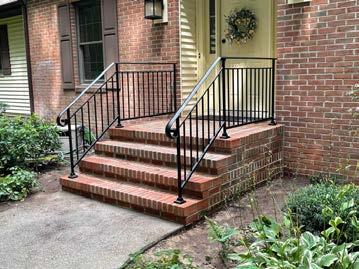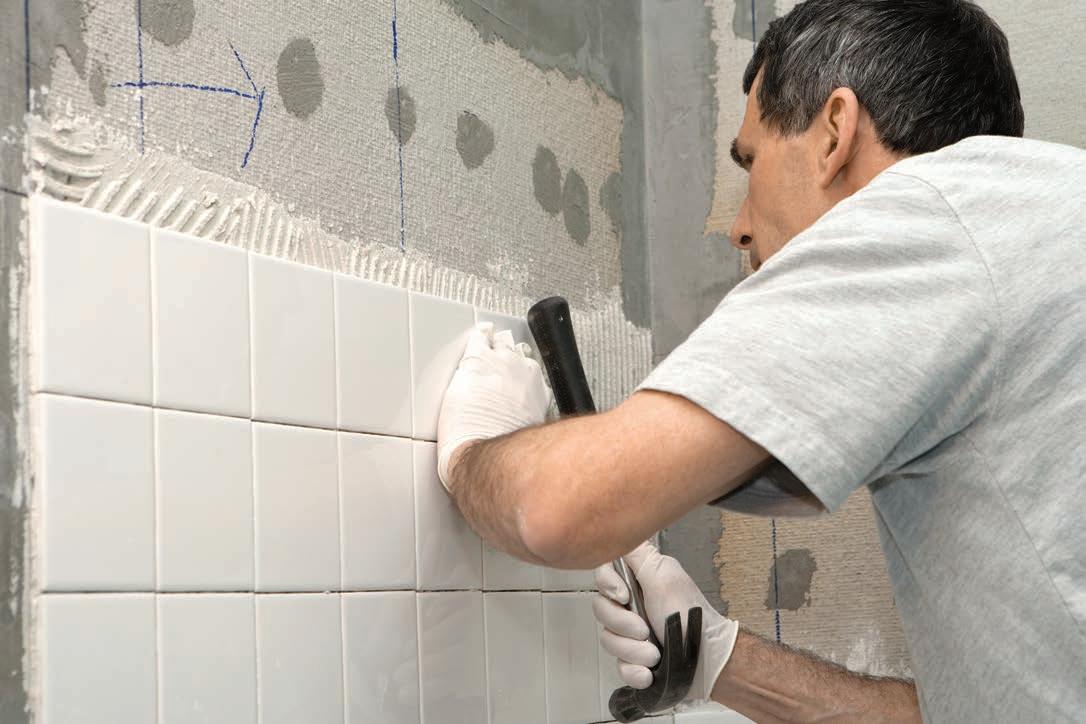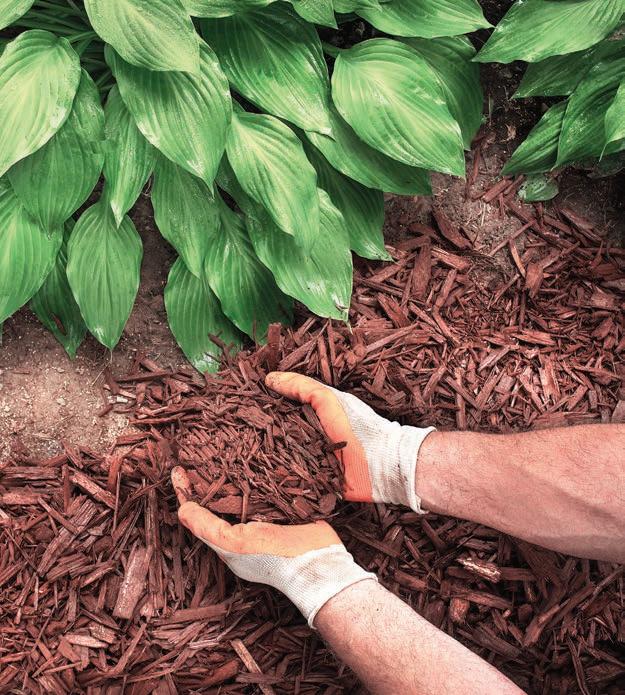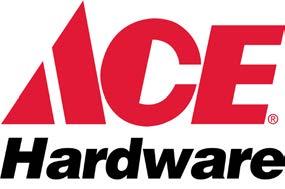


















The Change In Seasons offers A Great Opportunity To Spot-check the Home’s Various Safety Systems and Components To Ensure Your Family’s Well-being.
You might have overlooked everyday wear and tear, batteries might be running low or upgrades may be needed. This potentially life-saving equipment might be needed sooner than you think.
We usually associate smoke detector maintenance with changing the batteries. But the detectors themselves should be replaced every 10 years, according to experts. Check the manufacturing date on the back of the detector to make sure yours is still within its decade-long lifespan. If you’re buying new ones, consider modern smoke alarm options that also detect C02 or synchronize through the home.
Install them in each bedroom, outside every sleeping area, and at each of the levels of your home. Test your alarms at least once a month by pressing the designated button – and replace the batteries at least once a year. An easy way to remember this is to switch them out when the clocks change each spring for Daylight Saving Time.

Another critical safety device that requires maintenance is a fire extinguisher. You can’t just buy one and trust it will work forever. Regular inspections ensure its effectiveness. Check the pressure gauge located near the lever of your extinguisher, and look for any visible signs of damage or wear. Most high-quality extinguishers have a lifespan of five to
15 years, but that period can differ depending on the manufacturer.
Investing in a home security system is one of the most effective strategies for protecting your property. Many companies provide 24/7 emergency monitoring services that will notify you and the authorities if your alarm detects a potential threat. You’ll have peace of
mind, whether at home or away. Inspect and replace locks around your home as needed. If their basic working integrity is compromised, whether on a door or window, you may be at risk of losing valuables and jeopardizing your family’s safety. Pay close attention to locks that are difficult to operate and windows that still move while locked. Both are indications that a replacement may be needed.





The Time and Effort You Put Into P reparation In Spring Can Lead To A Thriving Garden For the Rest of the Warm Months.
So take the time now to plant bulbs, organize your garage or shed, repair and sharpen tools and get your compost pile going again. Here’s how:
If your garden shed isn’t heated or well-lit, you may encounter an unpleasant surprise or two when opening it back up for spring. The structure might have sustained damage from leaks or weather exposure. Rust can be an issue. Rodents or other small creatures may have taken up residence. When temperatures first begin to rise, inspect the shed and then get to work rectifying whatever issues you discover.
Use a file to sharpen any tools with blades, including pruners, shears and loppers. Lubricate any tools with moving parts. If they’re still caked with mud from the last growing last season, wash
them with a garden hose and then clean them in warm, soapy water. Next, use the same hose to thoroughly clean the wheelbarrow, then oil the wheels and tighten any loose bearings so it’s ready for the season ahead.
Prune or remove any perennials that have become overgrown or congested. Replace outdated supplies since items like grass seeds may not remain viable over long periods of time. Take a quick look around to make sure you have plenty of any needed fertilizers and soil amendments for the upcoming year. If needed, consult with your local extension office to better understand the specific needs of your plants before they begin to sprout.
Now, you’re ready. Spring is the time to plant bulbs for them to bloom in summer and fall. Apply a fresh layer of

mulch, too. Dyed mulches are generally designed to last for several seasons, but typically still need a slight refresh after the long winter. Mulching early will help with suppressing weed growth. It’s a good time to divide existing fall-
blooming plants. Separating them now gives the individual plants time to re-establish in their new locations. They’ll start developing the robust root systems they’ll eventually need when temperatures begin to drop again.

So You’ve
Maintain
A professionally installed sprinkler system can ensure years of lush shrubbery, bright flowers and green grass. When the ice and frost begin to melt, protect that investment by performing early maintenance to ensure everything’s in good working order before the system shifts into overdrive for summer.
The first part of the preparation process involves patience. Confirm that frosty winter conditions have passed before activating your sprinklers. If you run water through the system while the ground remains frozen, the pipes may burst during startup or shortly thereafter. Assess your soil’s condition by digging at least a foot deep in an area away from the underground tubing. If you encounter frozen soil, postpone the de-winterizing process until temperatures are higher.
Begin at the control panel for the sprinklers, which

is generally outdoors near your home’s water system. Closely follow instructions provided by the manufacturer or installer, while verifying that the settings for time, date, and zones remain correct. Inspect the condition of your backup batteries if the sprinkler system depends on them. If you have concerns regarding their remaining functionality, contact the installation company.
Cleaning the sprinkler heads before the first use may be the most labor-intensive part of this entire process, particularly if you have a large yard. Examine each one for any signs of wear and replace damaged parts before activating the system. You can do this with an old toothbrush, thoroughly cleaning all nozzles to ensure they distribute water uniformly across their assigned zones.
After cleaning, make sure all valves are closed except for the nozzle that is farthest from the main water source, which should remain open to allow trapped air to escape. Gradually open the main valve until you hear water flowing and then allow the main line to fill steadily. For larger systems, you may want to only slightly open the valve over a period of minutes. Opening it too quickly could result in costly mishaps like ruptured pipes or valves.

Freshening Up Your Home’s Exterior Is A Rite of Passage For Spring.
At some point, wear and tear will dictate that your house’s paint job needs to be addressed. But who should you hire? Here are a few tips on hiring the right professional painter for the job:
This job is typically too big, and might be too dangerous, for the average homeowner to tackle. Instead, look for experienced paint companies that specialize in exterior work. (Some painters focus solely on interior projects, so save those for when you need to update your kitchen.) Before reaching out to potential painters, take some time to familiarize yourself with the exterior surfaces of your home. Browse home improvement stores and design magazines to gather inspiration for your desired aesthetic. You might even consider gathering some paint samples to help underscore the kind of colors you prefer.
The cost of these exterior jobs reaches into the thousands of dollars, so conduct thorough research before you make a

hire. Before inviting painters to assess your home, look for online reviews and neighbor recommendations. Get three to five pre-estimates for any work you plan on having done, and then carefully evaluate them. View examples of their previous work on other homes.
Reputable painters will visit a home to provide an individualized estimate. During this visit, they will
inspect your paint job’s current condition while identifying any architectural challenges that may affect the project. This comprehensive evaluation helps them complete a more precise quote. Present your ideas regarding colors and seek their feedback. Their recommendations might include specific products or finishes that are more suitable for your local climate. Ask each paint contractor about their years of experience in the industry. Make sure they are properly
licensed and insured, and ask about affiliations with professional associations. Pay close attention to their professional insights, but don’t be persuaded into choices that aren’t in line with your own budget or personal preferences. Following this discussion, the painter will provide a more detailed estimate. Review everyone’s quotes, paying attention to the variations among them, before making a final decision. Ask about guarantees on their work.

Consider Getting A Home Warranty For Peace of Mind.
They’re also a great option if you are anxious about buying an older home.
Home insurance provides coverage for property damage caused by fire, wind, theft, hail or vandalism, along with liability protection when someone visits your property. On the other hand, a home warranty is designed to reduce the financial burden of major expenses when major systems or household appliances fail. They can also be put in place to prolong the coverage of an expiring manufacturer warranty. Home warranties may be purchased at any time, but they’re commonly included in real estate deals. They might serve as an additional selling point or to increase buyer trust.
These warranties provide coverage for repairing, servicing or replacing major appliances and home systems, offering protection in case a
high-value item malfunctions. You won’t need to search for separate repair professionals yourself. Instead, you will be linked with nearby affiliated technicians who will manage service requests to assess the covered items. A contractor sent by the home warranty company will arrive to identify the problem and proceed with repairing or suggesting a replacement for the item.
Older systems or appliances that are no longer under manufacturers’ warranties are prime candidates for home warranty coverage, since replacing a refrigerator, air conditioner, water heater or furnace can be expensive. Sellers may want to add a home warranty to cover the cost of things breaking down before the sale closes, or as a selling-point incentive. Buyers can purchase the home with confidence that a big bill isn’t looming if something fails. Those who have limited mobility, are on a fixed income or in their senior years may also want peace of mind.

If you opt to invest in a home warranty, bear in mind that most are marketed on an annual basis. Although some companies present two- or three-year options, it is wise to evaluate the coverage each year. What was effective in 2023 may not be as suitable in 2024. Your manufacturer’s warranty might be coming to an end, or you could have purchased a new appliance. Alternatively, if you have not used this coverage and prefer contacting local repair services as necessary, ensure that the plan satisfies your current needs.







By Gabbie Burton
Contributing Writer
Kate FitzGerald-Wilks knows that life gets busy. In the blur of work, family and every other pressure of modern life, some things get left behind – including the home.
That’s why she started her interior design and build firm, Timeless Design by Kate FitzGerald- Wilks, in order to ease the burden of creating a functional and beautiful home for their clients. By taking on the many layers of detail involved in interior design, home renovations and new- builds, Timeless Design ensures their clients have a home that is made just for them.
While Timeless Design began taking on projects in 2004 when FitzGerald-Wilks and her family relocated to Landenberg, she originally began her career in Washington D.C., working for the United States Department of Commerce. She explained that her step back from her career after having her three children didn’t last long as she felt she was “destined to be a working woman.”
The working woman is who she now sees her ideal client to be.
“I understood by being a working mother how little time you have and what you want to do with your time when you get out of work, and that is to have quality time with your family,” she said. “It leaves very little time for the luxury of decorating and organizing a home so it can become a haven for a working couple and their children.”
Acknowledging the value of time is important to FitzGerald-Wilks and her clients. With their streamlined processes, Timeless Design can cover all the details from a custom build to furnishing residential and commercial projects depending on their needs. They also offer con-

cierge services such as scheduling, monitoring crews, and curating products. Timeless Design’s clients quickly understand that working with their firm transcends mere aesthetics.
Organization, functionality and comfort are also elements Timeless Design focuses on.
“We can really get in there and help them develop a system that is easy to keep and good looking,” FitzGerald-Wilks said. “Drawing from over 20 years of experience, I have learned tricks that make life easier and more beautiful when it comes to raising children, having dogs and entertaining guests.”
‘It’s your sanctuary’
Whether it’s choosing fabrics that are compatible with pets or consulting with builders to ensure efficient layouts, FitzGerald-Wilks understands her client’s needs

and advocates for them throughout the project. When asked what makes a well-designed home she replied, “You should celebrate who you are and there’s no better place to do that than in your home,” she said. “When things mean something to you – it’s your sanctuary – it can add such richness to your life.”
FitzGerald-Wilks has seen this impact firsthand over her career. One family she worked with wanted to do something special for their widower father to make sure he felt welcome every time he visited.
“We were able to make an office for her husband to work from home, but also added a Murphy bed for the father, so he could have a queen size bed that would pull down with built-in closets on both sides, a comfy chair and his TV, and it turned into the most beautiful room,” FitzGerald- Wilks said. “The client recorded her father’s reaction when he saw it for the first time, and he walked in, and he almost cried. It really meant a lot to us
because it meant a lot to him.”
FitzGerald-Wilks and her team all understand the amount of effort and impact interior design has on homes and people. Timeless Design prides itself on getting the job done right with a network of highly skilled trades. FitzGerald-Wilks shares mutual respect with construction crews and contractors alike.
“We hold our own,” FitzGerald-Wilks said. “You must have it together when you show up on-site. That means having construction documentation and detailed specs on all aspects of the project.”
With over 20 years in the industry, she knows her stuff. The firm offers its own branded line of Timeless Design custom cabinetry and Timeless Design custom reclaimed wood tables. FitzGerald-Wilks credits her team-based processes to ensure the firm’s continued success.
Continued on Page 35

It Is Crucial To Have A Clear Payment Schedule In Place Before Finalizing A Contract.
This is particularly important for extensive renovation projects, as financial discrepancies can lead to delays or even abandonment of the project. Collaborate with your contractor to establish a mutually agreeable plan.
Prior to initiating negotiations,
establish a budget. In case funding is required, it’s best to explore various options to secure the most favorable terms. Exercise caution before
agreeing to interest rates or monthly payments that could pose challenges in the future. Once these decisions have been made, contact regional
contractors to obtain estimates and move forward. Then it’s time to settle the bill. Here are some things to keep in mind:
If a bidder insists on being paid in cash during negotiations, it might be best to consider other options. Without the documentation provided by credit card payments or checks, there is no evidence of payment being made. This could have serious implications in the future. The Federal Trade Commission also advises against
contractors who demand full upfront payment or encourage the use of a specific lender that they are affiliated with.
The most convenient way to keep track of payments is through credit card transactions. However, if you choose to write a check, retain copies of all financial records, including a copy of the payment, a clear explanation in the memo section, and proof of deduction from your account.
The amount you need to put
down for a down payment will vary depending on the scale of your project. For extensive renovations, a substantial sum may be necessary to cover the cost of materials.
Once the initial payment is made, establish subsequent payments based on milestones achieved rather than on any specific date. This approach incentivizes your contractor to closely follow the agreedupon construction timeline.
Prior to submitting the last remaining payment, conduct
a thorough inspection of the project to verify that the work has been completed according to your specifications.
The Federal Trade Commission recommends a sign-off checklist that includes:
• Obtain proof that subcontractors and suppliers were paid.
• Inspect and approve all completed work.
• Make sure the job site is clean and that tools, equipment and other materials have been removed.


Turn to innovative storage solutions like these to optimize your available space:
Fully customized garage storage systems are available, but it’s not necessary to spend tons of money to have a more functional space. Consider exploring yard sales, classified ads or resale shops for thriftier garage storage alternatives. Those who are open to items with minor cosmetic imperfections can find quality storage solutions that are sturdy enough to support your belongings but also far more affordable.
When floor space is at a premium, explore inventive ways to store items like bicycles, sports gear, and lawn equipment on the walls. Hooks are a common option. A modular wall-mounted slat storage system can also provide the flexibility to fit any specific need. You can enhance the slats with wire baskets or hooks to accommodate a wide range of items, from rakes to garden hoses. Transform the

interior of your garage door into valuable storage space by attaching metal brackets to securely hold lightweight sports equipment like fishing rods in a horizontal position.
Plastic storage bins help us all organize and separate things by season, sport or family member. But they can only be stacked so high – and that setup makes it very difficult to access anything but the top bin. Construct storage towers
with plywood shelving so that individual bins can be removed and then returned after use. You can also store light-weight items in plastic storage bins up above by screwing T-shaped 2x2 pieces of wood into the ceiling and then sliding the bins in place. Take advantage of unused space in the garage by creating corner shelves in the existing studs.
If you want to clear out space
on the floor of your garage, you can also look up. Items that are infrequently used can be stored in elevated areas. If you have a ladder available, installing a fixed overhead storage shelf is an easy option. Bicycle storage systems now incorporate a rope and pulley mechanism with hooks, allowing you to securely store them overhead. A similar pulley system can be employed to lift a metal shelf for storing items in plastic bins.








We Tend To Overlook the Convenience of Plumbing — That Is, Until the Moment It Stops Functioning P roperly.

In the best of circumstances, everyday schedules can be disrupted. In more complicated, longer-lasting cases, you and your family’s health could be threatened.
It’s best not to rely on inexperienced individuals when it comes to the maintenance of this system. Establish a connection with an accredited plumber before a situation becomes urgent, so you’re not forced to make hasty choices in a time of crisis. Verify the credentials of available plumbers in your vicinity, ensuring they possess the necessary licenses and insurance, along with positive recommendations. Then select a few candidates and schedule initial assessments of your plumbing system. Hire the pro who offers the best value mix of experience, customer service and price.
The Insurance Institute for Business and Home Safety reports that plumbing system failures result in an average cost of more than $5,000 per incident. To prevent such failures, they recommend having a licensed plumber conduct regular inspections and maintenance on your system.
Here are some things that they will be looking for:
• Blockages, slow draining, corrosion and signs of swelling in pipes or joints
• Consistent performance of
appliances like sump pumps or water heaters
• Tight connections and any leaks in the fitting areas
Water heater malfunctions can lead to significant inconvenience and lots of damage. Beyond the discomfort of a cold shower, the potential for catastrophic water intrusion is a real concern — especially if a leak goes undetected in a tank holding a substantial amount of water.
Additionally, the failure of a sump pump, which is crucial for draining storm- or wastewater, can result in mold growth or, in the worst-case scenario, house flooding. It is essential to regularly check and maintain these appliances to safeguard the well-being of your family and the value of your property.
Establishing an early rapport with a plumbing service could prove beneficial when the worst happens, since you may get priority assistance as a loyal customer. Upon their initial evaluation, ask the plumber to show you the whereabouts and demonstrate the operation of your primary water shutoff valve. This can be invaluable knowledge when trying to mitigate early damage from a leak while help is still on the way.

Red Tail Restoration & Land Management, LLC is changing the way land is managed for native biodiversity. According to the owner of the company, Greg Gagliano, Red Tail can serve as the advisors, the laborers, and as environmental advocates to achieve a wide range of goals in an environmentally responsible way.
“We are experts in carefully removing invasive plants from forests to increase native biodiversity,” Gagliano said. “We put such care into our methods that nature can often do the replanting for us as we just facilitate the desirable regrowth of native species. Of course we provide replanting services as well, but I don’t know of any other company that can flush up as many native plants from the existing seedbank while suppressing the invasives.”
Red Tail Restoration and Land Management works with homeowners, homeowner associations, farmers, and managers of public lands in a variety of ways to achieve wide-ranging goals.
“We create wildflower meadows or native landscapes where homeowners prefer not to mow, work with home-

owner associations to assess and help their lands and even host community volunteer days to increase the benefits to natural areas,” Gagliano said.
“Farmers may benefit from increased pollinator habitat as well as having the opportunity to support healthier ecosystems and water quality in areas adjacent to agriculture or livestock use.” he added. “Managers of public lands gain a huge advantage by determining areas where they want to see environmental improvements, then utilizing Red Tail to achieve those goals.”
Prior to opening the company, Gagliano, who has a degree in wildlife conservation from the University of Delaware, has worked throughout the Mid-Atlantic region on invasive plant removal, pond management, wildlife population surveys, endangered shorebird conservation, wildlife diseases, wetland assessment, environmental education, community outreach, and land management. Gagliano explained, “Many landowners are concerned about invasive plants that are overrunning their forests. They often wish to make their lands more aesthetic or accessible because they are covered by thorns and vines and limited in their ecological potential. We also get a lot of requests to create new meadows or to maintain existing meadows, to improve water runoff, and to design and install native landscapes that attract birds, pollinators, and other desirable wildlife,” Gagliano said.
He talked about what homeowners can do to improve the appearance of their properties. “Maintaining landscapes with year-round visual interest, and integrating those landscapes with lawn areas that are actually being used or providing some other specific purpose helps a lot with the appearance of properties,” Gagliano explained. “Utilizing native plants helps to blend their properties with adjacent natural areas and also has a wealth of environmental benefits. Ensuring that natural
areas adjacent to lawns or landscapes are free of invasive vines, thorns, and other undesirable vegetation is very helpful to improving the overall appearance of properties.”
Supporting healthy ecosystems is at the core of Red Tail Restoration’s work.
“Everything we do is aimed at supporting healthy ecosystems,” Gagliano said. “Every land and every landowner has a different set of needs and we do our best to work with both to achieve a variety of goals.”
After more than 15 years in the business, Gagliano and the staff at Red Tail Restoration and Land Management, LLC have the expertise and experience to formulate a plan based on the individual piece of land and the wants of the individual landowner. They have a long list of clients who have been pleased with the results of their hard work.
Eryn from Collegeville, Pa. offered this testimonial: “Our yard has been transformed from an invasive covered meadow and woods, to healthy, thriving areas that we can actually walk through and enjoy.”
Paige Worth from West Chester says: “If you like native plants and animals, hiring Red Tail is the way to give back. At my family farm they are working in a small wooded area to remove invasive hedges. Let there be light for spring beauties, ramps and orchids.”
Elaine, Natural Lands Steward, Village of Ardentown shared this experience: “Red Tail has helped us tremendously to identify and remove invasive plants. We appreciate their work ethic and expertise.”
Red Tail Restoration and Land Management has worked extensively throughout the region, with the primary work areas being southeastern Pennsylvania including Chester County, Delaware County, and Montgomery County, as well as northern Delaware throughout New Castle County, and in southwest New Jersey and northeast Maryland. Red Tail Restoration and Land Management, LLC is based in Glen Mills, Pa. For more information, call 610-772-1837 or visit Red Tail’s social media pages or website at www.redtailrestore.com.




It Can Be A Little Overwhelming As You Contemplate Embarking On A Remodel. There Are Numerous Crucial Factors To Consider Before Deciding To Expand or Enhance Your Home.
Your worries might pertain to expenses, while others could center on the quality and the return on your investment. As the National Association of the Remodeling Industry notes, it is best to begin with a clear understanding of your requirements, budget and timeline.
In some cases, you might
decide to wait to build up more savings — or you may opt to take out a small loan. Either way, this initial planning phase of any project is crucial. Once you’re ready, consult with a knowledgeable local home services expert for assistance in transforming your vision into reality.
When embarking on a home improvement project — whether you’re adding an extra bedroom, building a barn or installing a new hardwood floor — it’s critically important to create a detailed plan. Then, you have to adhere to it. Adding additional smaller jobs on top
of your original project can easily lead to budget overruns. By expanding the scope of work, you are increasing the costs of materials and labor, especially if you hire a professional. Collaborate with your contractors to establish realistic expectations before getting started. This will allow you to allocate a



specific budget and minimize extra expenses. Additionally, it ensures that you and the contractors are aligned on how long the project will take.
Altering the structure of your home will necessitate a lot more design and engineering work ahead of time. Homeowners should expect to see higher expenses and a much longer timeline, according to the NARI. Before embarking on this kind of major renovation, consider the following:
• Can I afford a large project like this one? Will I need additional funds?
• How old is my property? There might be hidden issues that complicate your plans.
• If you’re trying to build more equity, will these changes add to the home’s sales value?
• Are your contractors capable of handling a multiple- phase project like this one?
Once you have a clear understanding of the cost, timeline and needed contractors, you can then proceed with greater confidence.



The first day of spring, for instance, can serve as an annual reminder to check the evaporator coil on your air-conditioning unit, since
its cleanliness ensures optimum performance and the lowest utility costs per month. Routine maintenance like replacing air filters can
lower your average energy consumption by as much as 15%. Here’s a checklist of other things that can help you go green and save some green, courtesy of the U.S. Department of Energy:
WINDOWS Open your windows as the
mild temperatures of spring arrive, allowing for a cross breeze which will naturally cool rooms without using an air conditioner.
Consider updating your home’s window treatments. Energy-efficient covers like shades, blinds or film can drastically impact heat gain as temperatures rise in the afternoon. You’ll give the home a fresh new look while reducing energy costs. Use these new window treatments to bring in more sunlight during daylight
hours, then turn off artificial lights. Skylights can also significantly brighten a home — at no charge.
Experts say you can comfortably raise thermostats by as much as four degrees simply by installing and cooling your home with ceiling fans. You’ll be lowering costs without sacrificing anything in terms of comfort. Engage the venting systems while cooking and after bathing to remove warm, often humid air that
can lead to longer operational cycles for your cooling unit.
Many homes lose pricey air conditioning through leaks around windows and doors. Buy weatherstripping or apply low-cost caulk to seal any openings. These cracks make a surprising contribution to high utility costs. For instance, air loss through your air-conditioning unit’s duct system may account for nearly 30% of its energy consumption.
Check for leaks, then seal and insulate them to lower your electricity bills this spring.
Consider installing a programmable thermostat so that you can raise the settings when you’re not home or during off-peak hours, an option that may help reduce energy costs by as much as 10%. Consider using an outdoor grill on nice spring days, rather than heating up your home while using an indoor oven.



Homeowners Need To Remain Vigilant Against Unscrupulous Contractors Who Are More Focused On Making A Fast Buck Than Delivering Satisfactory Outcomes.
About one out of every 10 adult Americans becomes a victim of a scam or fraud each year, according to the Federal Trade Commission.
A significant number of these fraud charges involve home improvement scams. Avoid this fate by increasing your awareness and implementing a few basic safety measures. The FTC provides guidelines to help you select a trustworthy contractor who can achieve the desired outcome for your project.
Don’t trust anyone who:
• Knocks on your door looking for a job
• Wants to use leftover material from a previous project on your job
• Pressures you to hire them right away for work
• Only accepts cash, wants you to use a lender they know, or asks for the entire payment upfront
• Asks you to take care of securing building permits
• Doesn’t have a published business phone number

Approach trusted local lenders first when seeking out a home improvement loan. If possible, obtain a loan from a financial institution where you have a prior business relationship. Always be aware of potential scams where fraudsters offer to arrange loans through unfamiliar lenders. Thoroughly research and trust the lending institution before proceeding with any agreements.
Comprehensive documentation can often help with the early identification of dubious business practices, while also providing proof if anything turns into a legal matter. To safeguard yourself, the Better Business Bureau strongly advises homeowners to avoid participating in cash-only transactions, high-pressure sales tactics, substantial upfront payments and informal handshake agreements without a written contract. Thoroughly read and understand all documents before signing them. If you find yourself feeling uneasy, seek the assistance of a lawyer who can help you navigate the intricacies of these legally binding documents. There may be a fee involved. Still, it’s better to pay now and get a clear understanding of the terms and conditions, than to find yourself entangled in a subsequent legal battle.
Continued from Page 19
A new location in nearby Hockessin coming soon
So, what’s next? Timeless Design by FitzGerald-Wilks is focusing on expansion with a new location in Hockessin, Delaware opening to the public in the near future.
“It will be a place where we can showcase many of our custom products such as our custom reclaimed wood dining tables and cabinetry, window treatments, and millwork,” FitzGerald- Wilks said. “We’re very, very excited to have people come and look at our kitchens and talk to us about our processes.”
Timeless Design Interior Design Studio, Renovations, and Home Decor will be a “one-stop- shop” featuring everything they have to offer from wallpapers and flooring to kitchen and bath finishes, and will offer retail sales, providing an upscale alternative to larger box stores. Timeless Design also began offering financing on projects in order to expand their accessibility to the community.


“We’re very committed to doing what we can in this area and think we’re in the right place at the right time,” FitzGerald-Wilks said. “There is a sea of 20-30-yearold homes in our area ready for a major refresh. You might even be sitting in one of these homes yourself!”
To learn more about Timeless Design by Kate FitzGerald-Wilks, visit www.timelessbykate.com.



If winter has left you frosty and frigid, you may have a steamy future ahead as temperatures rise. Now is the time to hire a local service pro to take a look
at your heating, ventilation and air-conditioning system — otherwise known as HVAC. While searching, however, you’re likely to find pages and
pages of service and repair company results. Determining which one is best prepared to ready your system can seem like a daunting task.
Thankfully, there are a number of key indicators which will help when searching for a home service pro to look over your HVAC.
Work done before a contractor rings the doorbell will ensure you get the best quality service at a reasonable price. Search for home service pros who are properly certified. Reputable HVAC companies hire employees who have North American Technician Excellence certification. NATE is the nation’s not-forprofit certifying organization for HVAC and refrigeration techs. Technicians have to earn re-certification every two years, meaning they
remain up-to-date on industry developments and new standards. Make sure any contractor is also properly insured, with both business and liability policies. This protects you and the service pro in case there’s a mishap with the equipment or in your home.
Once you’ve confirmed that the paperwork is in place, look into their references. Check trusted websites including Yelp, NextDoor and Google for online testimonials or
complaints, and ask the contracting company directly to speak with other customers. Be particularly wary if an HVAC company refuses to provide these references, since that could be a sign that they have burned some bridges. Check in with the Better Business Bureau, and ask friends, family and neighbors for their recommendations, too. Once you’ve gathered this wealth of guidance and advice, you’ll be able to make a hiring decision with the peace of mind that comes from doing your homework.
Once you’ve narrowed down the possibilities, ask for detailed estimates from several contractors. They should spend a good amount of time looking over your system in order to evaluate your needs. Replacement systems will be tailored to the size of your home, insulation details, number of floors and windows. Repairs will involve duct system and unit inspections. Get itemized written estimates for comparison, while noting warranty options.

Lots of people fancy themselves as expert DIYers, standing at the ready with the tools and know-how to tackle most everyday jobs around the home. Still, some projects are simply too large
and complex to handle all by yourself. That’s when it’s time to hire a professional.
Home projects always come with an investment of
money and time, but some of them may prove to be more trouble than they’re worth. Creating a home addition is one of them. This is a complex endeavor that often requires a diverse
set of skills beyond the capabilities of an average do-it-yourselfer. There may be bureaucratic red tape and insurance implications. Stumbling into one of these challenges as a novice might

put off the completion of your project indefinitely.
Some things are easier than others, like removing a portion of drywall. Others, however, are hardly a straightforward task: You shouldn’t try to deal with or manage the removal of hazardous materials such as asbestos, mold or lead. These substances pose significant risks to your health, and necessitate the use of specific, often complex
safety precautions during their handling and removal.
Many DIYers can quickly and safely install a new light fixture or replace an outlet. But it’s important to recognize that larger electrical projects require the expertise of a licensed professional. Connecting power to a new addition, for example, is a major job that should not be attempted by an untrained individual. There are inherent personal dangers associated
with this type of work, not to mention the potential that faulty wiring might lead to a fire hazard. Hire a qualified electrician for these jobs.
Significant structural problems require both expertise and heavy equipment. Don’t take chances with the safety of your home and loved ones. Seek out a pro if your foundation is in need of repair due to cracks or a deteriorating structure.
As with electrical tasks, some home projects are well within the grasp of doit-yourselfers — including changing a toilet or updating fixtures. But other related projects demand a higher level of skill and understanding, including things like water-main issues or installing new plumbing. Should they be incorrectly replaced or installed, there’s a potential for significant damage throughout the entire house.

Experts say more than 50 million Americans are affected every year. Pollen is one of the main culprits, followed by various grasses, mold and dust that cause us to sneeze, cough and rub our eyes. Unfortunately, there remains no cure for these allergies — but these key strategies can help mitigate some of the worst reactions:
As you begin spring cleaning, consider one of the most common allergens found in our homes: Dust. Decluttering can quickly reduce its accumulation around your home. Remove items like unworn clothing, piles of reading material and old rags. Dust your home regularly since HVAC systems tend to distribute these particles throughout our homes. Remember that everyone spends a considerable amount of time in the bedroom, so focus on making this a safe zone that’s free from allergens associated with clutter. In addition to dusting, regularly change out bed linens and pillowcases.
Spring brings an influx of pollen and other allergens into your home, and not just through open doors. Maintaining a clean and fresh environment also involves regular assessments of your home’s air. Consider investing in high-quality filters for your living areas. Local HVAC technicians may also have additional recommendations that will improve your home’s air quality. Bedding is particularly prone to accumulating dust mites and pollen. They can cause allergic reactions overnight while we are tucked in, or later in the day after attaching themselves to our hair or clothing. Wash your bedding in hot water at least once a week.
Next, look down. Give your carpet a thorough spring cleaning. For the toughest jobs, it may be necessary to rent a commercial carpet shampooer from a nearby hardware store or hire a professional cleaning service. Remember that some

carpet types are more prone to trapping allergens and then releasing them into the air when disturbed. After a deep cleaning, make it a habit to vacuum at least once a week.
Ensure that your air systems and ductwork are regularly cleaned. If any components are showing signs of wear and tear, dust and moisture can easily get inside your home.

Pollinators Are What Make the Gardening World Go ’round. Birds, Bats, Bees, Butterflies, Beetles and Small Mammals Work To Pollinate Plants Just By Going About their Busy Lives In Our Garden.

This helps plants reproduce (meaning flower and fruit). Not only are the flowers and fruits pretty and tasty, but pollinators at work also help prevent soil erosion and shrink carbon footprints.
Help pollinators by creating space in your garden for them. Here are some pollinator favorites from the gardeners an Monrovia.
Stonecrop, or sedum: Rich foliage and clusters of flowers are the hallmark of this perennial. It’s available in a variety of colors and heights, including a groundcover variety that’s popular with bees.
Milkweed: It’s not just a source of food for monarch butterfly larvae. Milkweed nectar is also good for a whole host of butterflies and bees. There are many varieties, but choose one that’s native to your area to support your local pollinator population.
Coneflower, or echinacea: Traditionally petaled in bright pink, there are now varieties of coneflower in every color of the rainbow. No matter what color you pick, these tall, showy blooms look great in the garden.
Lavender: It smells great and attracts hordes of pollinators. Gardeners in warm, humid climates may find lavender tougher to grow, but there are varieties that work.
Cape fuchsia: This hardy perennial is a favorite treat for hummingbirds. The plant boasts tubular flowers that are perfect for the tiny birds to sip from. Hardy from zones 6-10.
Yarrow: Beautiful yellow flowers and ferny foliage aren’t the only treat these plants pack. Yarrow also attracts hoverflies, lacewings and ladybugs which, in turn, will eat up aphids, mealybugs and mites.
Goldenrod: Fluffy orange flowers are an important food for migrating monarchs and also benefit bees, the good kinds of wasps and helpful flies. Look for an easy care variety that brings beauty to the garden without a lot of work.
Bluebeard: Deep blue flowers appear in the late summer and go into fall, when pollinators need the nectar most. Add bluebeard to prairie and wildlife gardens to extend the pollinator feast into autumn.

Landscaping professionals can relieve the stress and strain of maintaining your lawn, shrubs and flower beds. They may even have some exciting new ideas that transform the space. Hiring local professionals also routes money back into your hometown economy. But there are key considerations before hiring a landscaper that include everything from qualifications
to price. Negotiating may be crucial to getting the best deal, since in some cases there may be different pricing structures based on how often they’ll have to come out during off seasons.
Landscaping companies come in all sizes, from local neighborhood companies to nationwide behemoths. Hometown independent

Once you’ve evaluated your personal needs, narrow your search to those who provide these services at a price you’re willing to pay. Next, check out online reviews and their ratings at independent websites like NextDoor, Yelp and Google. Check references
contractors will typically offer more straight-forward service options like mowing, spreading mulch, planting and perhaps even sprinkler installation and maintenance. Larger outfits may offer a more comprehensive package that includes whole-space transformations and robust teams to more quickly complete each visit. In many cases, the choice that’s right for you will come down to what you need – and what you’re willing to pay.







and ask around. If neighbors are using a lawn service, they may be able to provide critical tips on who to hire. Pricing for regular upkeep might be similar with several different companies, while larger landscape installation jobs are more widely varied. Landscape curbing will up the price tag on sod installation, for instance. Mowing will be cheaper than regrading or hydro-seeding. In-ground features and architecture associated with things like outdoor grills can run into the thousands of dollars. You may be able to find seasonable discounts either online or in local publications.
Prospective landscapers should provide a pricing sheet that details costs for each service, along with schedules and payment options. Inquire about discounts associated with bundling. For instance, installation of a stone pathway might be offered at a cheaper price if service pros are already on site doing other general landscaping jobs. Find out if your pricing changes when plants go into hibernation for the winter. And don’t forget to ask if there are any other deals you’re unaware of.


Every Thriving Flower Bed Starts With A Solid Foundation of Mulch. It P rovides A Big Aesthetic Boost, of Course, Serving As A Showcasing Background For Your Plants and Shrubs.
More importantly, mulch also suppresses weeds, retains moisture and enhances soil quality.
Apply mulch in the spring after planting your seasonal flowers and vegetables. Mulching around trees and other landscape features also enhances their visual interest. You’ll be putting the perfect finishing touch to your gardening efforts. Over the next few months, mulch will act as a protective layer that keeps weeds away. Into the winter, it prevents plant displacement while shielding delicate plants from cold weather. Once the mulch has fully decomposed, it’s time to refresh or completely replenish.
There is a wide variety of mulch available for any type of flower bed or garden, including wood chips, bark, pine straw, rubber mulch, dyed wood, grass clippings and even newspaper. Select
a type that complements the colors of your landscaping and home, and make sure it suits your local environment. If you choose dyed mulch, apply it during a period where it won’t rain for 24 to 48 hours to prevent staining nearby hard surfaces.
Wear gardening gloves when handling mulch to shield your hands from splinters and any dyes. Choose comfortable old clothing that you don’t mind getting soiled. If you have allergies, consider wearing a face mask for added protection. Use a wheelbarrow or cart along with a shovel to transport the mulch, and lift from your knees rather than your back. To complete the job, rake the mulch to create an even layer.

If weeds begin emerging through the mulch, remove them manually or apply a weed and grass killer. Mold may develop in areas where the entire surface isn’t exposed to air and light. Gently turn the mulch and evenly redistribute everything. As the mulch dries, the mold should dissipate. Exposure to sun and rain will cause your mulch to fade and break down, but that’s part of its purpose to enrich the soil. Turning the mulch will also help maintain its appearance for a longer period.


Once You’ve Found A Contractor Who Meets Your Needs and P rice, It’s Time To Enter Into A Formal Agreement To Work Together.
The contract will describe precisely what is required, lay out payment schedules and define other key parameters of the project. Crafting a successful home improvement contract hinges on details and clarity. Work shouldn’t commence until there is a shared vision, and these agreements provide the framework.
Angie’s List, a website specializing in home services,
outlines the following 10 must-have items for home improvement contracts:
1. A job description that outlines the project in detail.
2. Dates for start and completion that create a reasonable timeline.
3. Terms that tie payment to completion milestones.
4. Authorization that makes your contractor responsible for securing necessary permits.
5. Specific penalties for missed completion dates.
6. Clear procedure for work orders and any changes.
7. A detailed outline of all costs and needed materials.
8. A copy of the contractor’s proof of licensure, bonding and insurance.
9. A termination clause outlining how either the homeowner or contractor may exit the agreement without penalty.
10. A lien release that will protect the homeowner from liability should the contractor fail to pay their staff.
The amount your contractor
asks for as a down payment may vary, since there is no fixed rule governing these transactions.
To ensure compliance with local regulations, research laws in your state to determine whether limits are in place.
Be prepared to drive a hard bargain. Keeping the down payment as low as possible can serve as an incentive for your contractor to complete the project more quickly.
Request a written contract
from your contractor, even if it is not mandatory in your state. This will help establish clear definitions for the project, ensuring that both parties are on the same page. You can both follow the specified contract items, keeping track of key timelines meant to ensure efficiency and progress. Whenever possible, try to be present so you can monitor the work being done. Schedule regular meetings to discuss progress. By actively participating as a homeowner, you can minimize surprises along the way.



You Can Pack Your Gardens With Plants That Are Edible To More Than Just Bees and Butterflies. With A Little Work, You Can Make Your Yard Beautiful Both Outdoors and On Your Dinner Plate.
First, determine what kind of things you want to grow and how much work you want to put in. Are you comfortable on ladders, and do you have the room for fruit trees? Do you use a lot of herbs? What about edible flowers, such as viola?
We know it’s healthful to eat the rainbow and a plate full of colorful veg looks tasty. But you also can take advantage of those bright, beautiful colors in your garden. Consider pairing bursts of colorful greens, such as species of cabbage or kale, with snowy white cauliflower. Take advantage of the tall, leggy shapes of beans and tomatoes. Alternate the shapes not only for optic interest, but also to prevent diseases from spreading.

Mix and match herbs with ornamentals in your garden. Some species even masquerade as ornamentals, especially if you leave some to bloom and go to seed. They also make a tasty meal for pollinators or even boost the smell in a bouquet of your homegrown blooms. Again, make sure to plan for your location and color.
There are species of basil, for example, that are deep, vibrant purple and oregano that turns a lovely soft silver.
If you’ve got a small space, never fear. Your local garden
center can point you to herbs, greens, tomatoes and even fruit trees that thrive in pots. Remember to consider how you’ll move the pots in case of a cold snap and how to feed and maintain these miniature produce aisles in your yard.














